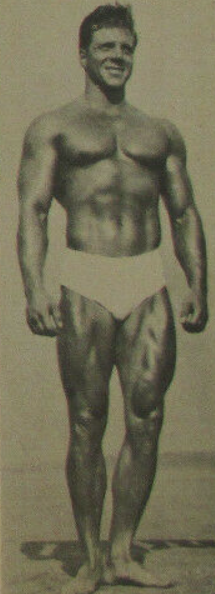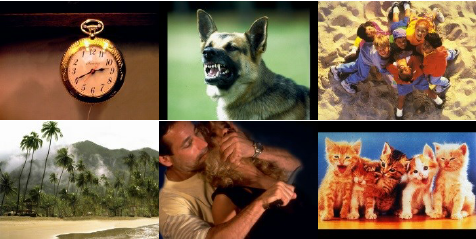“A picture is worth a thousand words,” as the saying goes. The power of visuals is beyond words. Why tell people something, when you can show them? In this blog post, we explain just why visuals have such great power.
Picture superiority effect
One definite pro for including visuals in your work is the so-called picture superiority effect. This theory assumes that pictures are more likely to be remembered than words. The effect is based on the dual-coding theory proposed by Allan Paivio, professor of psychology at the University of Western Ontario. Paivio came up with the concept in 1971. In dual-coding theory, it’s proposed that visual and verbal information are proposed in different ways by the mind. Processing words is supposed to be more challenging for the brain regarding both the coding and retrieval of information. Pictures, on the other hand, are coded more easily because of their symbology, says Paivio.

Memory recall
So pictures help improve our memory recall skills, argues the picture superiority effect. Is that true? Research has found that seeing a picture prior to processing texts improves comprehension levels. That’s particularly the case when a person has low prior knowledge beforehand. When we see pictures, it’s easier to remember information linked to it. This demonstrates the importance of pictures in the learning process.
Memory recall of pictures is also better over time. A study found that after three days, its participants could only recall 10 to 20 percent of information that was written or spoken. Visual information, on the other hand, could be recalled up to almost 65 percent. A big difference!
Seeing is believing
That they improve memory recall, is not the only reason we love pictures so much. Images have strong convincing power, like the proverb ‘seeing is believing’ supports. Take advertising, for instance: using large pictures in ads will improve attention levels in advertising, regardless of its contents. And when we’ve caught your attention, no doubt the ad will do its work better than when we have not.
In order to persuade, framing your image right is important. And no… we don’t mean with a wooden picture frame. Framing theory argues that the way in which you present your message influences the audience. According to research, pictures framed in a certain way are actually stronger in convincing opinions and behavioral intentions than pieces of text are. If a certain text and image are shown to the audience together, the picture in particular serves to change behavioral intentions. Why pictures in particular? The researchers believe that this might be the case because of the ‘emotional consequences’ that pictures have.
Emotional appeal
Yes, emotional consequences! Simply put, how visuals can make us feel. If anything, pictures speak to our emotions: another reason why we are fans. Whether happy, sad or angry, within seconds they can pull up any feeling depending on the contents.
How do we know that that’s the case? Let’s take a look at the International Affective Picture System or IAPS. This research method was developed in the 90’s of the last century by American psychologist Peter Lang. This database of around 700 pictures is often used in research in order to investigate emotions. IAPS has been tried and tested by many others since its start over twenty years ago. The pictures turn out to be an excellent trigger for emotions.

Hard things made simple
Using visuals in your work will help you present complex ideas in a simpler form.
This is also called visual literacy: the ability to interpret and make meaning from images. We can ‘read’ pictures in order to get some sort of meaning from it. It’s part of visual rhetoric – communicating effectively through visual elements. Visual rhetoric studies how humans use images to communicate.
High-speed processing
How does it work? Humans are incredibly good at processing images at high speed. At insanely high speed, actually: the brain can identify images that we see for as little as thirteen milliseconds! For some comparison… it takes around 150 milliseconds for a human eye to blink once. 13 milliseconds, however, isn’t ideal: our performance is much better if we see images at, for instance, 80 milliseconds. On a daily basis, that’s luckily not an issue. We can look at the images we’re working with for much longer than that, usually. According to Mary Potter, professor of brain and cognitive sciences at MIT:
“The fact that you can do that at these high speeds indicates to us that what vision does is find concepts. That’s what the brain is doing all day long — trying to understand what we’re looking at.”
The study supports the idea that feedforward processing – a one direction flow to the brain – is enough to identify concepts without further processing. Reminds you of something? Paivio’s dual-coding theory, if you ask us! Yes, you probably remember his picture.
Use images as much as possible to help your audience to remember what you want to tell them. Of course the images, the pictures, the visuals have to match with the content. But: even if they don’t match 100% but just have an emotional touch, the reader’s brain power will have an easier job of remembering what you wanted to tell them.
A thousand words… or more?
So there you have it, we love visuals because they are worth more than a thousand words. We can process them super (duper) quickly
But what if you combine them with other types of media, for instance in an infographic? Our kontextmaps do just that: adding the visual and informational together to form one informative piece of content. And even more, actually. Mappings have a sort of explanatory power that’s hard to beat.
Header photo: Unsplash (Martin Zangerl)





